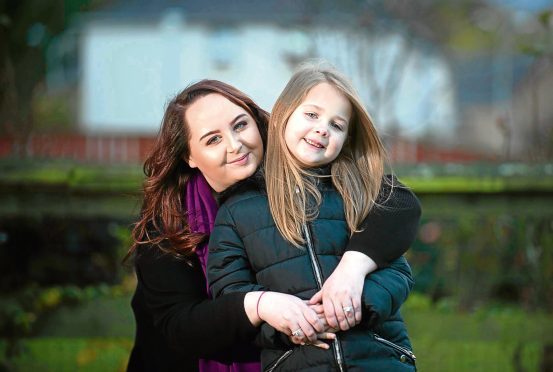A girl who spoke only two sentences in her first six years has responded so well to a new therapy programme that she has been elected as the voice of her class.
Brave Poppy Campbell suffers from a form of mutism, which means she has a phobia of anyone hearing her voice – even her parents.
It took almost four years for the Inverness youngster to pluck up the courage to say “Mummy, I love you” – but then she fell silent again for a whole year. When she started school last year, she had no voice at all. Even when she cried, she made no sound.
Poppy’s only way of communicating was through eye movements and facial expressions.
But just months after starting a speech and language therapy programme that was expected to last seven years, the P2 pupil has finally found her voice.
The six-year-old won the place on the school council by standing up in front of 28 classmates to say why they should choose her. Mum Sarah Campbell, 28, said: “She’s just amazing. I can’t begin to express what she has gone through to get to where she is now.
“She didn’t talk at all. There was no sound, just complete silence. Even her crying was silent. Now you can talk to her all day, and she will talk to you.”
The therapy involved her mum repeating hundreds of words and sounds dozens of times a day to Poppy to get her to speak. Mrs Campbell said: “It was a lot of hard work on her part. But you could tell she really wanted to talk.
“Now, because she has had speech therapy, she speaks properly. But then she’ll come out with things like ‘get real, Mum’ and ‘that’s so embarrassing’, and it’s so lovely to hear because I know that’s her and not what she’s been taught. She’s managed to find attitude herself.” Selective mutism is an anxiety disorder which affects around one in 1,500 children. Experts think she may also have speech dyspraxia.
Mrs Campbell says it is terrifying to know it can reoccur at any time. But she added: “They say it’s like stage fright; you don’t have the power to stop it. But we are a close, loving family and Poppy doesn’t seem anxious about anything.”
